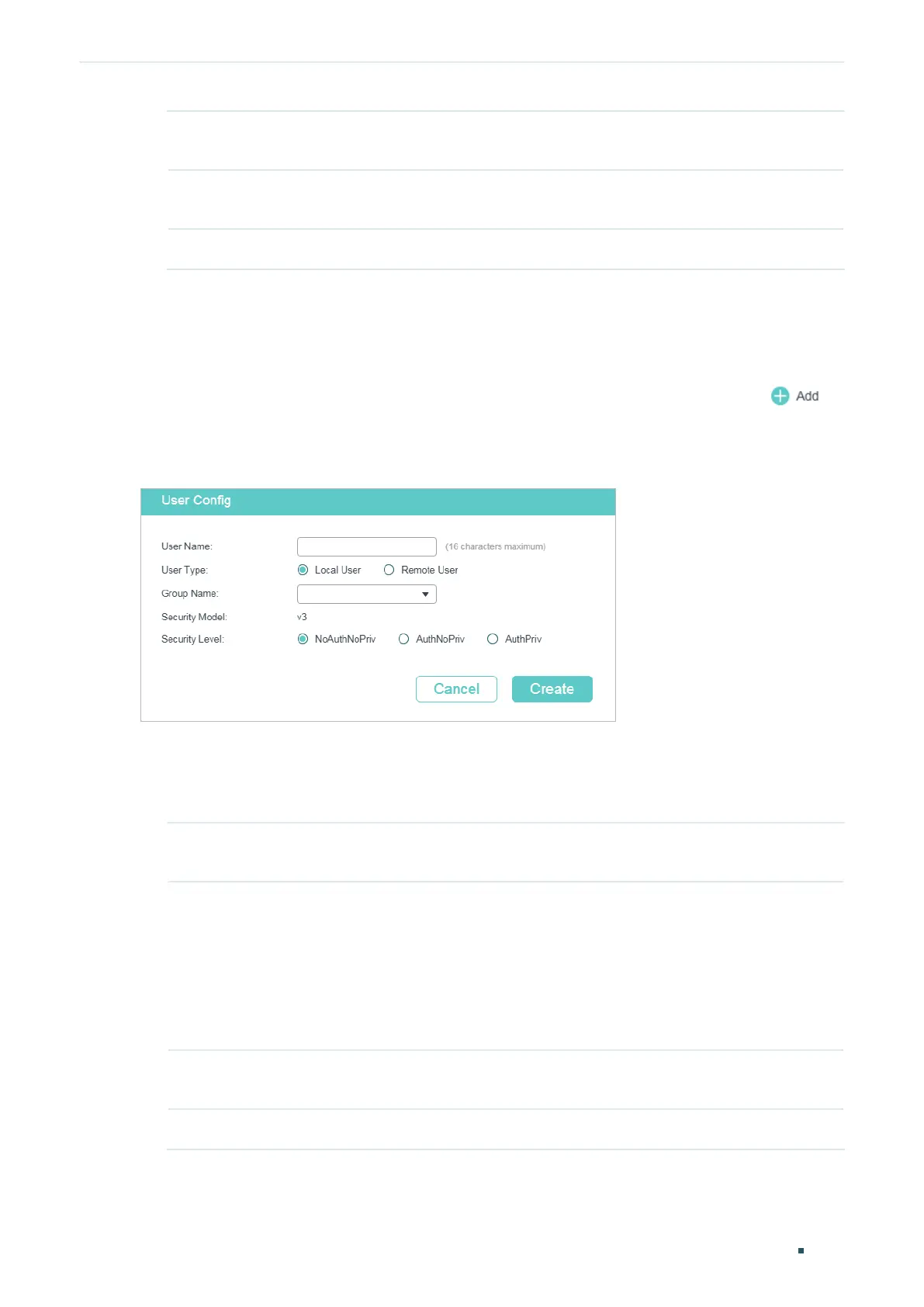User Guide 1030
SNMP Configurations
Read View Choose a view to allow parameters to be viewed but not modified by the NMS.
The view is necessary for any group.
Write View Choose a view to allow parameters to be modified by the NMS. The view in Write
View should also be added to Read View.
Notify View Choose a view to allow it to send notifications to the NMS.
2) Click Create.
2.1.5 Creating SNMP Users (For SNMP v3)
Choose the menu MAINTENANCE > SNMP > SNMP v3 > SNMP User and click
to
load the following page.
Figure 2-6 Creating an SNMP User
Follow these steps to create an SNMP user:
1) Specify the user name and user type as well as the group which the user belongs to.
Then configure the security level.
User Name Set the SNMP user name using 1 to 16 characters. For different entries, user
names cannot be the same.
User Type Choose a user type based on the location of the user.
Local User: The user resides on the local engine, which is the SNMP agent of the
switch.
Remote User: The user resides on the NMS. Before configuring a remote user,
you need to set the remote engine ID first. The remote engine ID and user
password are used when computing the authentication and privacy digests.
Group Name Choose the name of the group that the user belongs to. Users with the same
Group Name, Security Model and Security Level will be in the same group.
Security Model Displays the security model. SNMPv3 uses v3, the most secure model.

